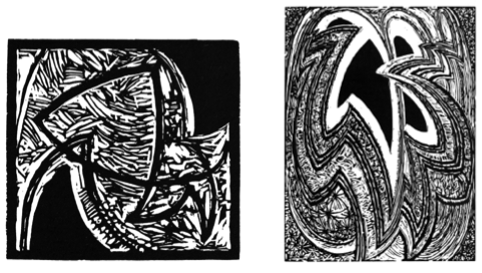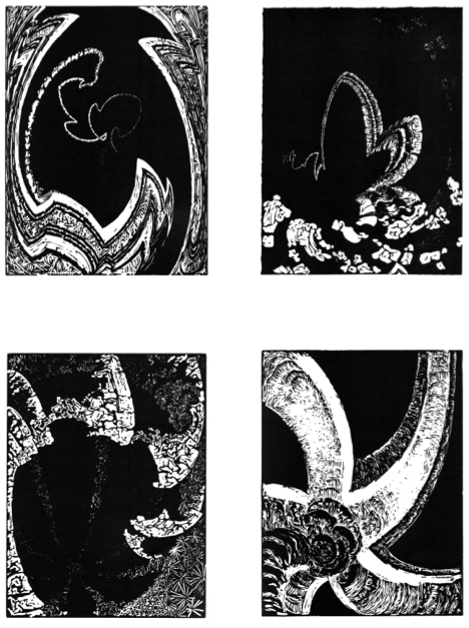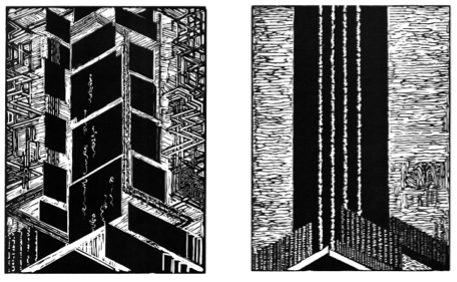FRANTIŠEK KUPKA
Among the best known pioneer non-representational artists, Mondrian and Van Doesburg were both interested in Theosophy while Kandinsky was very involved in Anthroposophy, the philosophy worked out by Rudolf Steiner. Also interested in such matters was the Czech painter based in Paris, František Kupka, who has a good claim to be regarded as the very first non-representational painter. He wrote articles for a magazine called La Vie Mysterieuse, specialising in occult and psychic questions but he was also part of a group of poets and artists grouped round the now almost forgotten poet René Ghil who were trying to develop a large view of the world and of human history based on the theory of Evolution which Ghil saw as as a long psychological process in which 'nature' was attempting to achieve self consciousness. In this perspective the development of man and of human arts and technology could be seen as a continuation of the process, 'nature' acting through man. Similar views were being developed in the Russian Empire notably by poets such as Velimir Khlebnikov and the painter, another pioneer of non-representational painting, Kasimir Malevich.
I want to show you two series of woodcuts by Kupka, two of his 'Four Stories in Black and White, both telling the 'story' of the emergence of a definite form. The first concerns the evolution of a natural, organic, curvilinear form:


The second story evokes architectural, man-made technical shapes:


Bearing in mind my original project of basing this talk on the difference between the vertical, diagonal and curve it is interesting here to quote Kupka on the meaning of the vertical in his book Creation in the plastic arts published in Czech, in Prague, in 1922: 'In the vertical there is all the majesty of the static. It contains at once the top and the bottom, combining them ... In its solemnity, the vertical is the backbone of life in space, the axis of all construction; it monumentalises the most trivial sketch that has been squared.' Creation in the Plastic Arts also says of Islamic art: 'Islamic art, consisting wholly of invented forms - and not forms stupidly and wrongly copied from nature - embodies a harmony which combines visual purity with a rare nobility. It is a loftier world than ours, an art which does not stop short at the simple "arabesque". There is, in the arrangement of the plastic elements, a rhythmical movement of the mind.' (quoted by Arnauld Pierre in his introduction to the Four Stories in Black and White).